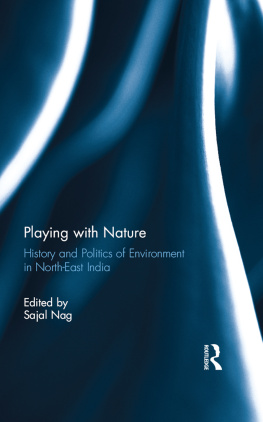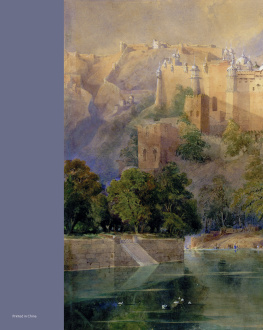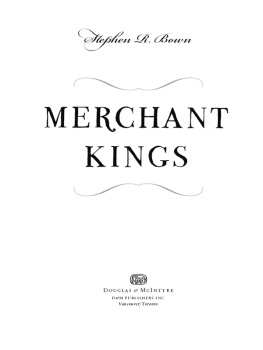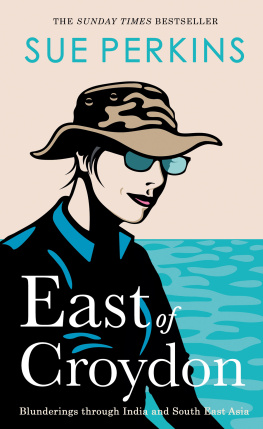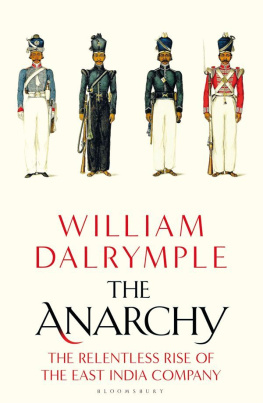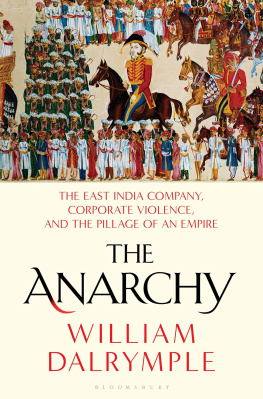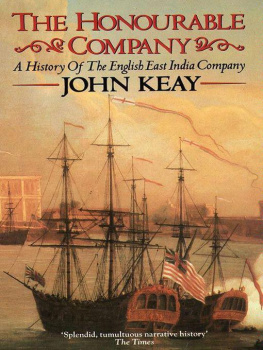
EAST INDIA COMPANY AND URBAN ENVIRONMENT IN COLONIAL SOUTH INDIA
This book makes a pioneering attempt to analyse the linkages between the rule of East India Company and urban environment in colonial India over more than a half-century, 17461803, through a study of the city of Madras (present Chennai).
The book traces urban development in colonial South India from a broad economic history point of view and with a focus on its environmental dimension, covering the period from the First Carnatic War until the 18th century by which time the English East India Company had consolidated its power. It discusses themes such as urban development, infrastructural development, housing and buildings, city, and suburbs, and development of land and roads in the colonial period. Using extensive archival resources, it offers new insights on the various aspects of the shifting urban physical environment and captures the development of Madras city limits; road infrastructure, building of paved streets, whitewashed walls, and compounded houses; establishment of garden houses, use of land resources; development of masonry bridges by merchants, housing problems, and the building of Fort House, Garden House, Admiralty House, Pantheon House, Custom House, etc. in Madras, to describe the impact of colonialism on urban environment.
An important contribution to the history of urban economics and environment, this book with its lucid style and rich illustrations will be an essential read for scholars and researchers of colonial history, modern Indian history, environmental history, urban environment, urban history, political economy, urban economic history, Indian history, and South Asian studies.
Moola Atchi Reddy is a former professor of the Department of Economics, School of Social Science, University of Hyderabad, Telangana, India. Joining as the first faculty member in 1979, he retired as professor in 2006 after serving for nearly 27 years. He is a recipient of meritorious medals from the Department of Economics, Andhra University. He was a research assistant for the project on the Cambridge Economic History of India, Vol. 2, ed. Dharma Kumar (1982). With a PhD in economic history from the Delhi School of Economics, he worked at Ford Foundation, New Delhi, and Sri Venkateswara University (19768). He has published two books: Lands and Tenants in South India: A Study of Nellore District, 18501990 (1996), and Trade and Commerce of the East India Company in India (Madras) (2006). Several of his articles have been published in refereed journals and edited books, in addition to over 100 partly published and unpublished papers read in conferences, seminars, and workshops. His research interests are in studies of colonial Madras.
First published 2022
by Routledge
2 Park Square, Milton Park, Abingdon, Oxon OX14 4RN
and by Routledge
605 Third Avenue, New York, NY 10158
Routledge is an imprint of the Taylor & Francis Group, an informa business
2022 Moola Atchi Reddy
The right of Moola Atchi Reddy to be identified as author of this work has been asserted by him in accordance with sections 77 and 78 of the Copyright, Designs and Patents Act 1988.
Disclaimer: Every effort has been made to contact owners of copyright regarding the visual material reproduced in this book. Perceived omissions if brought to notice will be rectified in future printing.
All rights reserved. No part of this book may be reprinted or reproduced or utilised in any form or by any electronic, mechanical, or other means, now known or hereafter invented, including photocopying and recording, or in any information storage or retrieval system, without permission in writing from the publishers.
Trademark notice: Product or corporate names may be trademarks or registered trademarks, and are used only for identification and explanation without intent to infringe.
British Library Cataloguing-in-Publication Data
A catalogue record for this book is available from the British Library
Library of Congress Cataloging-in-Publication Data
A catalog record for this book has been requested
ISBN: 978-1-032-05265-6 (hbk)
ISBN: 978-1-032-10488-1 (pbk)
ISBN: 978-1-003-21549-3 (ebk)
DOI: 10.4324/9781003215493
Typeset in Sabon
by Apex CoVantage, LLC
DEDICATED TO PROFESSOR DHARMA KUMAR
CONTENTS
2 Growth
3 Gardens
4 Lands
5 Roads
6 Housing
7 Buildings
- 2 Growth
- 3 Gardens
- 4 Lands
- 5 Roads
- 6 Housing
- 7 Buildings
Guide
Figures
2.1 Madras in the 18th century
2.2 Egmore Fort
2.3 Remains of Egmore Fort
3.1 Patrick Russell
4.1 Black Town wall
4.2 Black Town wall, Central Gate
4.3 Black Town wall, magazine
4.4 Sea Gate
5.1 Surf boat
6.1 Medical school
6.2 Clives house
7.1 Govt. House before repairs
7.2 Govt. House after repairs
7.3 Leith Castle
7.4 Brodie Castle
7.5 Monegar Choultry
Maps
2.1 Madras, 1768
5.1 Madras, end of 18th century
Tables
2.1 Measurements of works in feet, Santhome, 1751
3.1 Storms and cyclones at Madras, 174691
3.2 Population density and environment of Madras, 18th century
5.1 Male Asylum and road lotteries from 1 Aug. 1795 to 24 Nov. 1799
7.1 Cost of renovations to the Fort House, March 1783
7.2 Shawmiers rental account, 1758
7.3 Shawmiers furniture account, 1758
7.4 Houses of leading individuals, Fort, 1800
7.5 Memorandum of trading vessels, 17967
Appendices
| Apdx. | Appendix |
| Apds. | Appendices |
| Brig. | Brigadier |
| Col. | Colonel |
| Ed. | Editor |
| Eds. | Editors |
| EIC | East India Company |
| Govt. | Government |
| Lt. | Lieutenant |
| Masuli | Masulipatnam |
| NE | North-east |
| NW | North-west |
| Pags. | Pagodas |
| Pondy | Pondicherry, Puduchery |
| Rs. | Rupees |
| SE | South-east |
| SW | South-west |
| Trichy | Thiruchirapalli |
For the first time, this study brings forth new insights into urban development from a broad economic history point of view with a focus on the environmental dimension of the erstwhile Madras city, the present Chennai, over more than a half-century from the mid-18th to the early 19th centuries. It describes in detail various aspects of the shifting physical environment of Chennai city. The topic is inherently interesting as many of the details of this history are not widely known. The existing literature on the economic and environmental history and urban studies did not address the urban environment on a wide range of issues, such as the ever-changing pace of urban development process in the general infrastructural development and housing, etc. Though several scholars had written about Madras/Chennai city in general, none of them had addressed it from an environmental point of view. Given the background, this book is an important contribution to the environmental history in general and the urban environment in particular.



